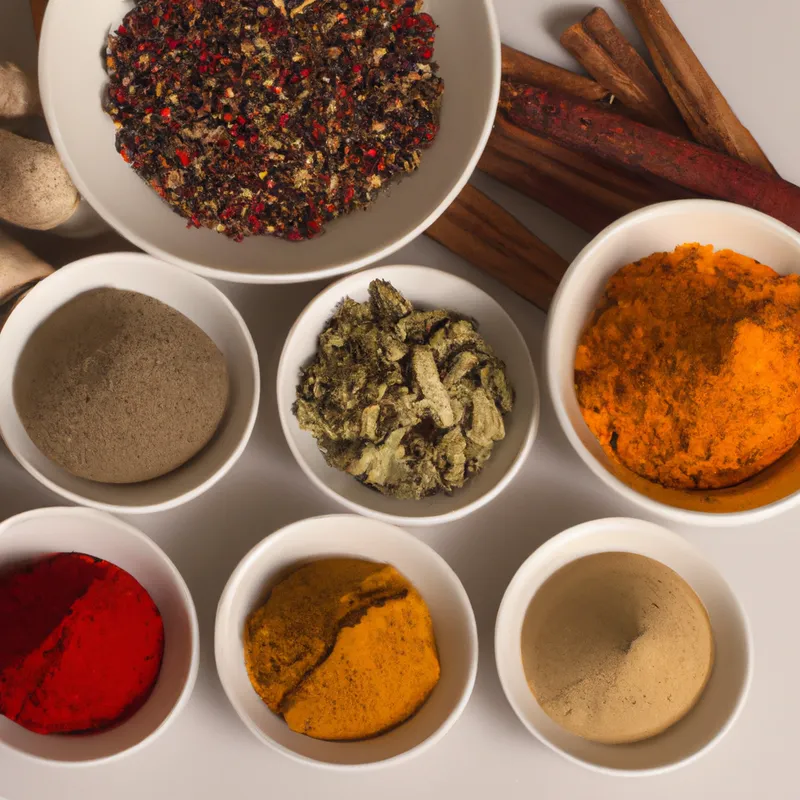Elevate Recovery Meals with Flavorful Spices
The Role of Spices in Enhancing Recovery Meals
After an intense workout or a long day, your body needs recovery. Nutrition plays a vital role in this process. Recovery meals are crucial for effective recovery. Spices often get overlooked in these meals. Incorporating spices enhances flavor and boosts nutritional value. This blog explores how spices transform recovery meals.
Why Spices Matter in Recovery Meals
Spices add more than just flavor. They provide numerous health benefits. Many spices have anti-inflammatory properties. These properties help reduce soreness after exercise. Spices also enhance nutrient absorption. Efficient nutrient absorption aids recovery.
Spices contain rich antioxidants. Antioxidants combat oxidative stress caused by exercise. Including spices supports your body’s natural recovery processes.
Tips for Incorporating Spices into Recovery Meals
Start with Common Spices
Begin with common spices from your kitchen. Black pepper enhances nutrient absorption, especially curcumin from turmeric. Turmeric offers excellent anti-inflammatory benefits. Mix turmeric into your smoothie or rice dish for added recovery benefits.
Cinnamon is a versatile spice. It adds sweetness without sugar. Additionally, it helps regulate blood sugar levels. Sprinkle cinnamon on your post-workout oatmeal or yogurt for a nutritious boost.
Experiment with Unique Flavors
Once comfortable, explore unique flavors. Add cayenne pepper for a kick. Cayenne contains capsaicin, which reduces pain and inflammation. Mix it into chicken stir-fry or sprinkle it on roasted vegetables.
Ginger is another fantastic option. It soothes your digestive system and reduces muscle soreness. Incorporate fresh ginger into smoothies or brew it into tea. Your body will appreciate this addition.
Create Spice Blends
Crafting your own spice blends enhances recovery meals. A mix of garlic powder, onion powder, and paprika elevates grilled chicken flavor. This combination boosts nutritional benefits while making meals tastier.
Consider making a curry blend with turmeric, cumin, and coriander. Use this blend in lentil dishes or vegetable stews. These spices offer a wealth of health benefits.
Advice on Using Spices Effectively
Know Your Limits
While spices provide many benefits, moderation is key. Some spices can be potent. Start with small amounts and gradually increase. You want to enhance, not overpower, your meals.
Consider allergies or sensitivities. Some people may react negatively to specific spices. Always listen to your body and adjust accordingly.
Balance Flavors
Aim for balance when incorporating spices. A well-seasoned meal should have layers of flavor. Combine spicy, sweet, and savory elements for satisfaction. Use herbs like basil and cilantro alongside spices for freshness.
Experiment with different combinations to discover what works best. A balanced meal tastes better and supports recovery.
Benefits of Spices in Recovery Meals
Adding spices to recovery meals offers numerous benefits. They enhance flavor, making healthy meals enjoyable. When meals taste good, you stick to your nutrition plan.
Spices also improve digestion. Many spices, such as ginger and fennel, support digestive health. This ensures your body absorbs necessary nutrients for recovery.
Lastly, spices help reduce inflammation. Chronic inflammation hinders recovery. Incorporating anti-inflammatory spices supports healing processes. This leads to quicker recovery and improved performance.
Conclusion
Incorporating spices into recovery meals enhances nutrition and flavor. Start with common spices and explore unique flavors. Create spice blends for added benefits. Use spices in moderation and balance flavors. Enjoy delicious meals that support recovery efforts. Embrace the power of spices, and watch your recovery improve!
Below are related products based on this post:
FAQ
Why are spices important in recovery meals?
Spices are important in recovery meals because they provide numerous health benefits, such as anti-inflammatory properties that help reduce soreness after exercise. They also enhance nutrient absorption, which aids recovery, and contain rich antioxidants that combat oxidative stress caused by physical activity.
What are some common spices I can use in my recovery meals?
Common spices to start with include black pepper, turmeric, and cinnamon. Black pepper enhances nutrient absorption, while turmeric offers anti-inflammatory benefits. Cinnamon adds sweetness without sugar and helps regulate blood sugar levels. You can easily incorporate these spices into smoothies, oatmeal, or rice dishes.
How can I effectively incorporate spices into my meals?
To effectively incorporate spices, start with small amounts to avoid overpowering your meals. Aim for a balance of flavors by combining spicy, sweet, and savory elements. You can also experiment with creating your own spice blends, such as a curry mix or a blend of garlic powder, onion powder, and paprika, to enhance the flavor and nutritional benefits of your dishes.















Post Comment